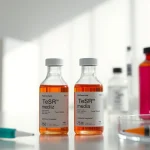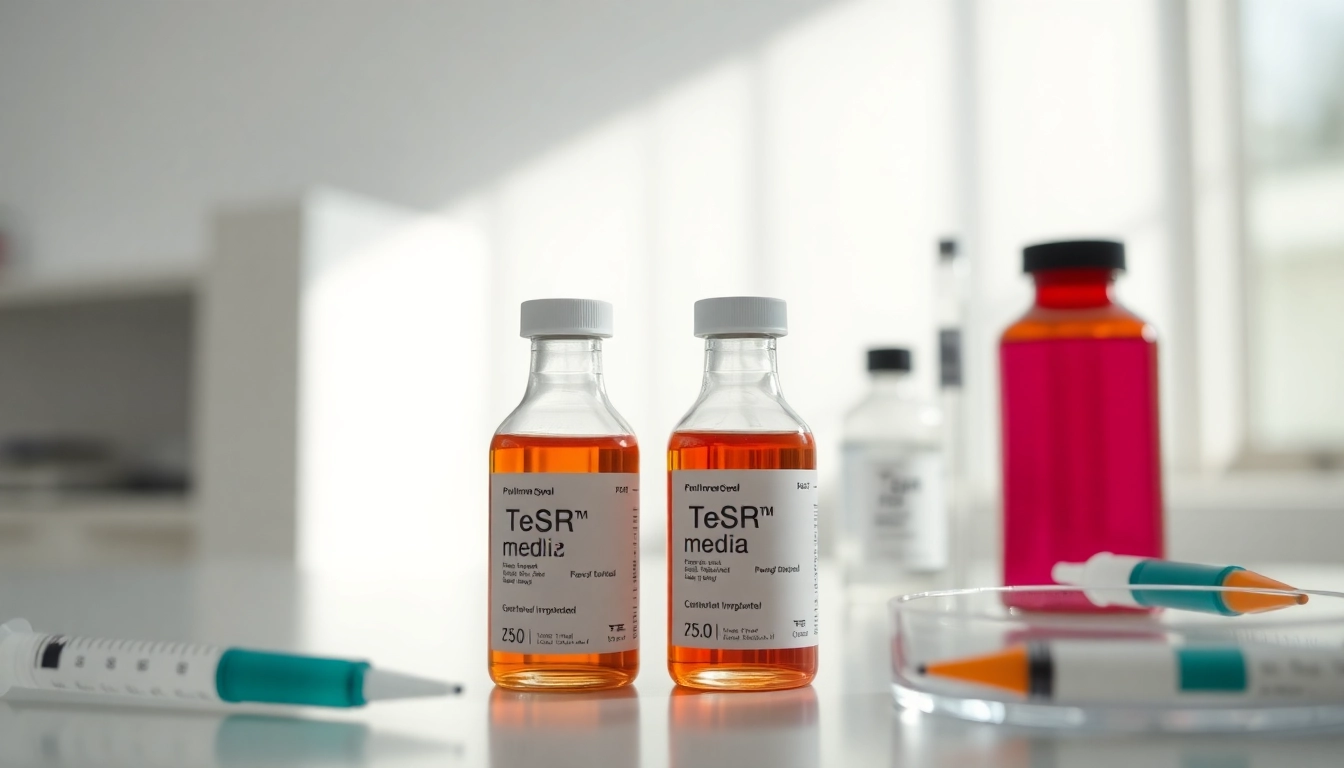Understanding TeSR™ Media for PSC Culture
Pluripotent stem cells (PSCs) have revolutionized regenerative medicine and developmental biology, providing vast opportunities for therapeutic advancements. Cultivating these cells effectively is paramount to ensuring their viability and functionality. The TeSR™ family of feeder-free media has emerged as a powerful tool for maintaining human embryonic stem (hES) and induced pluripotent stem (iPS) cells under controlled laboratory conditions. Utilizing all check resources available on their product page can greatly enhance research methodologies and outcomes.
The Importance of Feeder-Free Systems
Traditionally, stem cell cultures relied on feeder layers of supportive cells that provided essential growth factors and physical structure. However, feeder-free systems, such as the TeSR™ media, offer several advantages:
- Defined Environment: Feeder-free systems minimize variability by removing the influence of feeder cells, creating a more controlled and defined culture environment.
- Reduced Contamination Risks: Eliminating feeder layers decreases the potential for microbial contamination, thus ensuring purity.
- Increased Reproducibility: Such systems enhance experimental reproducibility, which is crucial for longitudinal studies and comparative experiments.
- Enhanced Differentiation Potential: Feeder-free cultures are often more conducive to desired differentiation pathways without interference from feeder-layer components.
Overview of TeSR™ Product Line
The TeSR™ product line includes a variety of formulations tailored for different applications in stem cell research. Key products include:
- TeSR™-E8™: An essential formulation designed for the maintenance of hPSCs with minimal components.
- mTeSR™ Plus: Offers enhanced buffering capabilities, reducing acidification over time.
- TeSR™-AOF: Maintains strict animal-origin-free guidelines, addressing concerns around bioburden in surface cultures.
- mFreSR™: Specially designed for cryopreservation, ensuring optimal cell recovery rates.
- ReproTeSR™: Specifically formulated for reprogramming fibroblasts and other somatic cells into pluripotent stem cells.
Historical Development and Innovations
First introduced by STEMCELL Technologies in collaboration with Dr. James Thomson’s research group, mTeSR™1 has become one of the most widely cited feeder-free media, utilized in over 1100 publications. Subsequent innovations have included numerous media formulations designed to address specific research needs, furthering advancements in stem cell biology.
Key Features and Advantages of TeSR™ Products
Batch-to-Batch Consistency and Quality Control
One of the hallmarks of the TeSR™ media is its rigorous quality control standards. Each batch undergoes extensive testing for:
- Component Verification: Ensures all components are of high purity and suitable for culture applications.
- Functional Assessment: Verifies that the media supports healthy cell morphology, proliferation, and pluripotency.
- Consistency in Performance: Each lot is pre-screened to ensure reproducibility in experimental outcomes.
Optimal Environment for hPSCs
The formulation of TeSR™ products supports a conducive environment for hPSCs through:
- Cytokine Inclusion: Essential growth factors like FGF2 are included to support and maintain undifferentiated states.
- pH Control: Enhanced buffering capacities prevent acidification of cultures, preserving cell health.
- Minimal Composition: Simplifying the media formulation promotes understanding of the physiological requirements of hPSCs.
Cytokines and Their Role in TeSR™ Media
Cytokines are crucial in regulating stem cell behavior. In TeSR™ media, they play roles in:
- Maintaining Pluripotency: Growth factors included in the media actively promote the self-renewal and prevention of differentiation in hPSCs.
- Influencing Differentiation: As specific cytokines are modulated, hPSCs can be directed along desired differentiation pathways.
Applications and Use Cases in Research
iPS Cell Reprogramming with TeSR™ Media
Reprogramming somatic cells into iPSCs is a critical application of TeSR™ products. Optimal media formulations like ReproTeSR™ have been developed to enhance reprogramming efficiency, leading to:
- Increased Reprogramming Rates: Tailored conditions lead to fewer failed reprogramming attempts.
- Quality of Generated iPSCs: Enhanced viability and pluripotency markers in iPSCs reprogrammed in TeSR™ media.
Maintenance Strategies for Stem Cell Cultures
Effective maintenance protocols are essential to prolonging the life span and functionality of hPSCs. The following strategies are commonly employed:
- Frequent Subculturing: Regularly transferring cells to new media helps maintain optimal densities and health.
- Adaptation Protocols: Tailoring conditions when transitioning cells from feeder to feeder-free systems ensures successful culture establishment.
Differentiation Pathways Supported by TeSR™
The versatility of TeSR™ allows researchers to direct differentiation towards various cell types, thanks to its cytokine formulations. Major differentiation pathways include:
- Ectodermal: Directing cells towards neural lineages.
- Mesodermal: Inducing cardiomyocytes and hematopoietic progenitors using specific cytokines.
- Endodermal: Differentiation into pancreatic, hepatic, and pulmonary lineages through modified conditions.
Choosing the Right TeSR™ Medium for Your Needs
Guided Selection with the Interactive Product Finder
The TeSR™ product line features an interactive product finder designed to help researchers select the most appropriate media based on their specific cell type and intended research outcomes. By providing a clear workflow from maintenance to differentiation, users can pinpoint the exact formulation required for their unique application.
Comparison of TeSR™ Media Formulations
When selecting a TeSR™ product, it’s beneficial to compare core formulations:
| Product | Key Features | Applications |
|---|---|---|
| mTeSR™ Plus | Enhanced buffering, supports long-term culture | Maintenance of hPSCs |
| TeSR™-E8™ | Simplified formulation, minimal components | Maintenance of pluripotent stem cells |
| ReproTeSR™ | Enhanced reprogramming capabilities | Induction of iPSCs from somatic cells |
| mFreSR™ | Formulation optimized for cryopreservation | Storage of stem cells |
Recommendations for Specific Research Applications
For optimal results, recommendations include:
- For Maintenance: mTeSR™ Plus is ideal for extended culture periods.
- For Reprogramming: Use ReproTeSR™ for enhancing fibroblast reprogramming efforts.
- For Differentiation: Employ TeSR™-E5™ or TeSR™-E6™ media for targeted differentiation efforts.
Future Trends and Innovations in Stem Cell Culture
Emerging Technologies in PSC Maintenance
As stem cell technologies evolve, future innovations will likely focus on:
- Automation in Culturing: Utilizing robotics to cultivate hPSCs could standardize protocols and minimize human error.
- Microfluidic Platforms: These systems may provide precise control over cellular microenvironments and facilitate high-throughput screening.
- Artificial Intelligence: Advanced algorithms could optimize culture conditions based on real-time data.
Addressing Challenges in Stem Cell Quality Control
While advancements have been made in the culture of hPSCs, ongoing challenges remain:
- Genomic Integrity: Continuous assessment of genetic stability is essential as cultures proliferate over time.
- Cellular Heterogeneity: Developing strategies to control and reduce variability among cultured cells is critical for therapeutic applications.
Looking Ahead: The Future of TeSR™ Media
The future of TeSR™ media lies in further refinement of formulations based on researchers’ needs. Anticipated developments include more personalized media that can adapt to the unique requirements of individual stem cell lines and innovations in cold-chain logistics for improved transport and storage of stem cell products.









